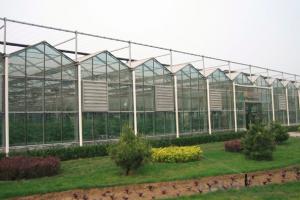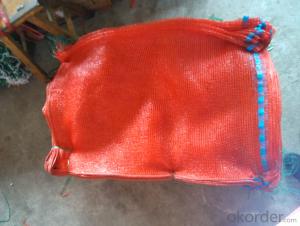Polycarbonate hexagonal greenhouse for sales
- Loading Port:
- Shanghai
- Payment Terms:
- TT OR LC
- Min Order Qty:
- 10 set
- Supply Capability:
- 1000 set/month
OKorder Service Pledge
OKorder Financial Service
You Might Also Like
Features:
Good light transmittance, the transmittance of single layer glass greenhouse up to 90%, the double glazing is 80%
Good water proof
Anti-age, anti-sweat large area for cultivating
Venlo, small roof not only makes the greenhouse beautiful, also provide high efficiency for users
Uniform illumination
Framework with double-face galvanizing processing, good anticorrosive effect
Good Draining ability
Greenhouse Configuration:
Hot galvanized steel structure, Aluminized structure, Aluminized top windows, side windows, Shading nets, Wet pat and exhaust fan cooling system, Heating system, Irrigation system, Light supply system, Computer intelligent control system
Advantage:
Full range and customized of product
Ideal price-quality ratio
Satisfactory service from “A” to ”Z”
True quality guarantee
- Q: Are there nursery trays with built-in misting systems?
- Yes, there are nursery trays available with built-in misting systems. These trays are designed to provide optimal moisture levels for seed germination and plant growth. The misting system helps to create a humid environment, promoting healthy root development and preventing dehydration in young plants.
- Q: Trying to attach a Fiberglass Splitter to a piece of plastic trim are there screws that dont need a nut to hold them together tightly out there for purchase? Any tips on how to do this?
- There are no plastic self tappers because self tappers work by having a thread that is similar to a drill bit and cutting through the material you are installing against. Even if you used a metal self tapper you would need some kind of backing in order to hold the trim on. What you want to install trim work is a plastic rivet. If you go to an auto parts store or check online, you can fine a plastic riviter set that includes a manual rivet gun and a package of rivets. These are like the ones that come on the car from the manufacturer, and you squeeze the handle of the gun together and it installs the rivet very easily and the rivet holds on quite well. It also will not damage the fiberglass or plastic.
- Q: How do you control weeds in ground cover beds?
- There are several effective methods to control weeds in ground cover beds. One approach is to manually remove weeds by hand, ensuring to pull them out from their roots to prevent regrowth. Another option is to lay down a thick layer of mulch to suppress weed growth and also retain moisture in the soil. Additionally, using weed barrier fabric or landscape fabric beneath the ground cover can prevent weeds from emerging. Regularly inspecting the beds and promptly removing any new weeds that appear is crucial to maintaining weed control.
- Q: My brother thinks he was shocked, but the thing he touched was plastic. Could the plastic have conducted electricity?
- Does Plastic Conduct Electricity
- Q: Can agricultural plastic products be used in urban rooftop hydroponics?
- Yes, agricultural plastic products can be used in urban rooftop hydroponics. Agricultural plastic products, such as grow bags, containers, and irrigation systems, can provide a suitable and efficient solution for growing hydroponic crops on urban rooftops. These products help to create a controlled environment, conserve water, and protect plants from external factors. Overall, agricultural plastic products can play a significant role in facilitating the success of urban rooftop hydroponics systems.
- Q: What is rapid sorting?
- Agricultural film, agricultural film are mainly plastic film and plastic film films, mainly for PE film, PE PE/EVA, has shed film, PVC film, in recycling, should distinguish between PE and PVC film, agricultural film is dirty, and often clip with dirt, sand, grass, nails, wire etc, to remove the iron impurities and cleaning, recycling method is mainly granulation, if, with manual sorting, cleaning condition, after cleaning, waste film can be dried directly by hot extrusion method for the production of plastic products, such as pots, barrels, plastic flange etc..
- Q: How does ground cover affect the growth of nearby annuals?
- Ground cover can significantly impact the growth of nearby annuals as it competes for resources such as sunlight, water, and nutrients. Depending on the type of ground cover, it can either provide shade and conserve moisture, benefiting the annuals, or it can inhibit their growth by reducing the availability of these essential resources. Additionally, certain ground covers may release chemicals that can either promote or inhibit the growth of nearby annuals. Overall, the impact of ground cover on the growth of nearby annuals depends on various factors such as the specific ground cover species, the annuals' requirements, and the availability of resources in the given environment.
- Q: What is the best ground cover for a tropical garden?
- The best ground cover for a tropical garden would be a combination of plants like moss, ferns, and creeping vines, as they can thrive in the humid and shady conditions typically found in tropical climates. These plants not only provide a lush and green carpet-like appearance but also help retain moisture, prevent soil erosion, and create a cool and inviting atmosphere.
- Q: plus, Where are the wholesale markets for plastic in India?
- Yes, you can get a discount if you bring your own plastic. But you will not save that much(maybe only 3%) because plastic itself is not that expensive. You are paying mostly for the glueing and sewing skills of the doctors. I would not buy the plastic wholesale from India because they usually have a minimum order, like 1 ton. Usually a plastic surgeon will have equipment to mold their own plastic. So you can bring old toys, utensils, etc. and the doctor will melt it for you. Just make sure that color of your plastic matches you. For example: don't bring in a red blue toy. Because when they melt it, the result will be purple.
- Q: How do agricultural plastic products help with moisture control in storage?
- Agricultural plastic products help with moisture control in storage by acting as a barrier, preventing moisture from seeping into the stored goods. This helps to maintain the quality and freshness of agricultural products by reducing the risk of mold, mildew, and other moisture-related issues. Additionally, these products can also help in preventing condensation, which aids in preserving the overall integrity of the stored goods.
Send your message to us
Polycarbonate hexagonal greenhouse for sales
- Loading Port:
- Shanghai
- Payment Terms:
- TT OR LC
- Min Order Qty:
- 10 set
- Supply Capability:
- 1000 set/month
OKorder Service Pledge
OKorder Financial Service
Similar products
Hot products
Hot Searches
Related keywords
























